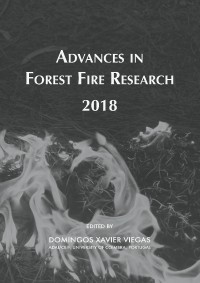Please use this identifier to cite or link to this item:
https://hdl.handle.net/10316.2/44631| DC Field | Value | Language |
|---|---|---|
| dc.contributor.author | Chuvieco, Emilio | |
| dc.contributor.author | Pettinari, M. Lucrecia | |
| dc.contributor.author | Lizundia-Loiola, Joshua | |
| dc.contributor.author | Roteta, Ekhi | |
| dc.contributor.author | Padilla Parellada, Marc | |
| dc.contributor.author | Oom, Duarte | |
| dc.contributor.author | Lewis, Philip | |
| dc.contributor.author | Storm, Thomas | |
| dc.contributor.author | Kaiser, Johannes | |
| dc.contributor.author | Mouillot, Florent | |
| dc.contributor.author | Laurent, Pierre | |
| dc.contributor.author | Bistinas, Ioanis | |
| dc.date.accessioned | 2018-11-10T18:49:47Z | |
| dc.date.accessioned | 2020-09-05T02:04:29Z | - |
| dc.date.available | 2018-11-10T18:49:47Z | |
| dc.date.available | 2020-09-05T02:04:29Z | - |
| dc.date.issued | 2018 | - |
| dc.identifier.isbn | 978-989-26-16-506 (PDF) | |
| dc.identifier.uri | https://hdl.handle.net/10316.2/44631 | - |
| dc.description.abstract | Biomass burnings (including forest, grassland, peatland and agricultural fires) have important impacts on global terrestrial and atmospheric systems, affecting land cover, surface albedo, and the atmospheric concentration of greenhouse gases, chemically reactive species and aerosols. Several products have been generated in the last years to estimate total burned area, but uncertainties remain, particularly those associated to small and low intensity fires. Impact of climate and societal changes modify traditional fire regimes, extending fire seasons, increasing fire severity or introducing fire in sensitive areas. The Fire_cci project of the European Space Agency Climate Change Initiative aims to generate consistent time series of burned area products to assess the extent of biomass burnings, as well as their spatial and temporal characteristics. Fire impacts on atmospheric and terrestrial processes are assessed, including modifications of vegetation patterns and biomass availability. The global burned area products of the Fire_cci program currently available are derived from MERIS FRS and MODIS 250m sensors and cover the period from 2001 to 2016. These global burned area products are complemented with a small-fire database generated from medium resolution sensors (Sentinel-2 and Sentinel-1) for the African continent. BA algorithms for new Sentinel-3 sensors (OLCI and SLSTR) are also being developed. Validation of the global products is based on a statistical sampling design of 1200 Landsat scenes. | eng |
| dc.language.iso | eng | - |
| dc.publisher | Imprensa da Universidade de Coimbra | por |
| dc.relation.ispartof | http://hdl.handle.net/10316.2/44517 | por |
| dc.rights | open access | - |
| dc.subject | Burned area | eng |
| dc.subject | Remote Sensing | eng |
| dc.subject | Earth Observation | eng |
| dc.subject | Global | eng |
| dc.subject | Fire impacts | eng |
| dc.subject | ESA | eng |
| dc.subject | CCI | eng |
| dc.title | Generation of a global burned area product from satellite data: the ESA Fire_cci project | por |
| dc.type | bookPart | por |
| uc.publication.firstPage | 1035 | - |
| uc.publication.lastPage | 1042 | - |
| uc.publication.location | Coimbra | por |
| dc.identifier.doi | 10.14195/978-989-26-16-506_114 | - |
| uc.publication.section | Chapter 5 - Decision Support Systems and Tools | por |
| uc.publication.digCollection | PB | por |
| uc.publication.orderno | 114 | - |
| uc.publication.area | Ciências da Engenharia e Tecnologias | por |
| uc.publication.bookTitle | Advances in forest fire research 2018 | - |
| uc.publication.manifest | https://dl.uc.pt/json/iiif/10316.2/44631/200952/manifest?manifest=/json/iiif/10316.2/44631/200952/manifest | - |
| uc.publication.thumbnail | https://dl.uc.pt/retrieve/11016565 | - |
| uc.publication.parentItemId | 55072 | - |
| uc.itemId | 68195 | - |
| item.grantfulltext | open | - |
| item.fulltext | With Fulltext | - |
| Appears in Collections: | Advances in forest fire research 2018 | |
Files in This Item:
| File | Description | Size | Format | |
|---|---|---|---|---|
| generation_of_a_global_burned_area.pdf | 914.76 kB | Adobe PDF |  |
Items in DSpace are protected by copyright, with all rights reserved, unless otherwise indicated.
